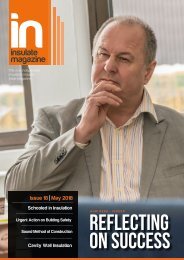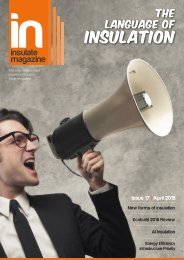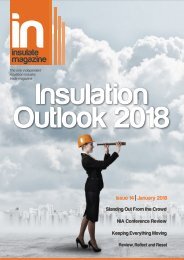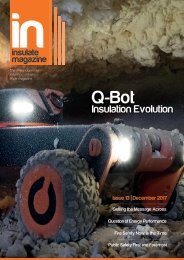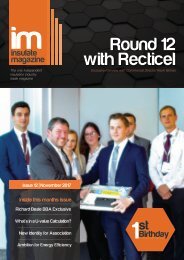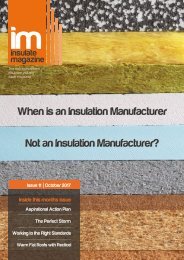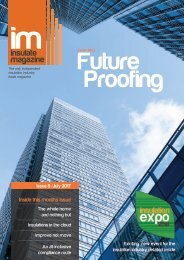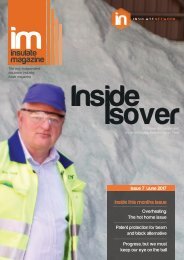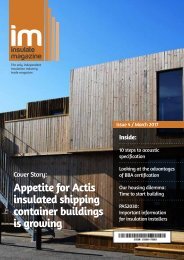Insulate Magazine May 2018
You also want an ePaper? Increase the reach of your titles
YUMPU automatically turns print PDFs into web optimized ePapers that Google loves.
www.insulatenetwork.com<br />
<strong>Insulate</strong> Columnist<br />
Can the New Eco3 Scheme<br />
Deliver on its promises?<br />
Simon Storer, Chief Executive of Insulation Manufacturers Association (IMA)<br />
It seems that barely a week goes by without a consultation coming out of Westminster and this month has been no<br />
different. One of these has been the publication of the Government’s plans for the third round of funding under<br />
the Energy Company Obligation - informally known as ECO3.<br />
The ECO scheme initially began in 2013 and since then has delivered around two million energy<br />
efficiency measures. The current phase is due to end in September this year with ECO3 taking its<br />
place and running until 2022.<br />
So What’s New? Some of the Key Changes are:<br />
• Socussing entirely on low income and vulnerable households<br />
• Supporting low income vulnerable households not in receipt of means tested benefits<br />
• Focussing on first time central heating installations and removing funding for oil-fuelled systems<br />
• Ensuring that 15% of the delivery measures are to rural areas<br />
• The desire to introduce new and innovative energy saving measures<br />
It would be hard to argue against any<br />
of these changes; they are aspirational<br />
in trying to bring people out of fuel<br />
poverty and to provide a more<br />
comfortable and healthier environment<br />
for dwelling occupants.<br />
However, the key to success will be<br />
in taking a holistic approach to the<br />
energy efficiency of each building,<br />
installing more than one measure<br />
where appropriate and being able<br />
to offer installations by competent<br />
tradespeople backed up with<br />
guarantees. This is why the link to<br />
the Each Home Counts initiative is<br />
so important in order to ensure that<br />
precious resources are not wasted on<br />
shoddy installations resulting in poor<br />
performing homes which later need<br />
to be corrected. It is also important<br />
not to lose sight of the consumer in<br />
all of this. Multiple measures could<br />
mean multiple interruptions for<br />
surveys and installations, different<br />
people in and out of their homes<br />
which many may not be comfortable<br />
with. This all needs to be carefully<br />
managed and balanced and ways<br />
sought to minimise disruption whilst<br />
optimising the benefits.<br />
Of course, we need to ensure that<br />
one of the key opportunities isn’t<br />
missed and that is to ensure that the<br />
fabric of the building is as thermally<br />
efficient as it can be before installing<br />
other measures. So proposals, such<br />
as one to ensure insulation measures<br />
are installed when replacing broken<br />
heating systems seem very sensible.<br />
However, it is disappointing to see a<br />
proposed reduction in the number of<br />
solid wall insulation (SWI) installations<br />
of c4,000 per year, purely based<br />
on cost factors. Surely it’s better<br />
to ensure that more homes are well<br />
insulated rather than trading off on<br />
other measures?<br />
34<br />
www.insulatenetwork.com



